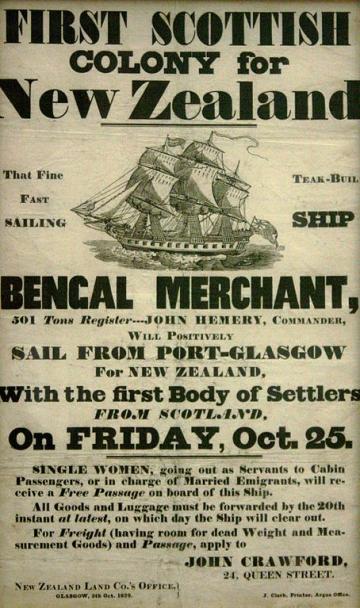Letters to Emma begins with the establishment of Oamaru in the early 1850s; the letters themselves, beginning in the 1870s, mostly cover the period 1878-1885. For those new to New Zealand history, here are a few dates and details to help you put this in context:
New Zealand was settled by Polynesians in the 13th century (best evidence to date).
A first European ‘discovery’ by Abel Tasman, a Dutch explorer, wasn’t followed up (although it is responsible for the name “New Zealand”).
Capt Cook’s explorations in the 1770s began European exploitation of New Zealand.
The first Europeans to follow were sealers and whalers.
In 1840, the British signed a treaty with the Maori (or at least with many tribes): the Treaty of Waitangi.
From 1841-53, New Zealand was governed by three successive governors, a very small ‘Executive Council’ and a ‘Legislative Council’ (mostly consisting of the Executive Council!). This was replaced by elected provincial councils (six initially; eventually growing to nine), plus a national parliament consisting of an elected House of Representatives and an appointed Legislative Council. In 1853, the House had 37 members, elected by some 6000 eligible voters, of whom 100 were Maori.
The population exploded in the 1860s, when the gold rush began in Otago. In 1858, Dunedin (Otago’s capital) had some 1700 people; by 1874 it had 18,500, making it New Zealand’s largest city. In 1869, New Zealand’s first university opened in Dunedin; followed four years later by the University of Canterbury in Christchurch.
In the North Island, the 1860s saw a resurgence of the New Zealand Wars, between Maori and Pakeha (Europeans).
Julius Vogel oversaw a “spectacular development phase” during the 1870s. Vogel was Premier twice and Colonial Treasurer from 1869-1887, having begun his political career in the Otago Provincial Council. Vogel’s plan for New Zealand involved borrowing some £20 million from Britain for assisted immigration and extensive infrastructure (1800 km of railway, 4000 km of telegraph lines, plus roads and public buildings).
Under the assisted immigration schemes, some 100,000 immigrants flooded in during the 1870s — which not only raised the population level, but also brought about a much better gender ratio.
By 1881, the European population was over 470,000.
But the ‘booms’ seen in New Zealand, Australia, Canada, South Africa and the United States, were counterbalanced by ‘busts’. In New Zealand, the 1880s saw one such ‘bust’, with close to 10% of its adult male population experiencing bankruptcy.
This is the world of Letters to Emma.
References
“The Penguin History of New Zealand” by Michael King. Published by Penguin Books, 2003.
“Replenishing the Earth: The Settler Revolution and the Rise of the Anglo-World, 1783-1939” by James Belich. Published by Oxford University Press, 2009.



